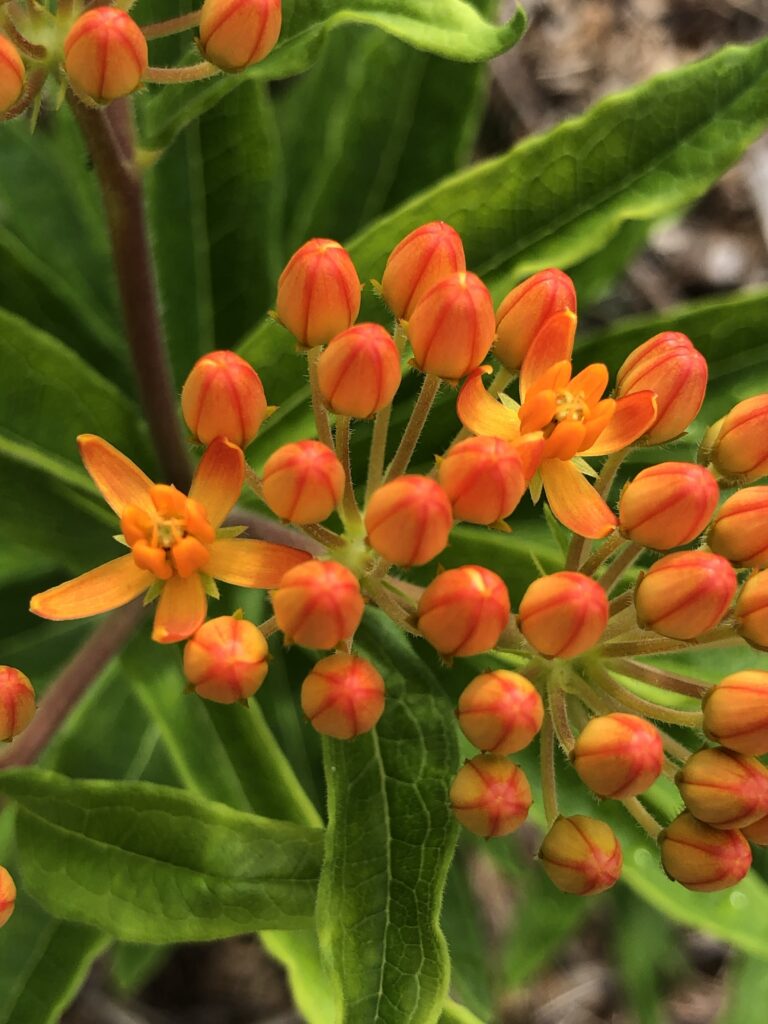Photograph by: Abby Cali
What is this plant?
Butterfly weed (Asclepias tuberosa) is a native North American perennial wildflower. It is a member of the milkweed family and is known for its beautiful orange flowers and its ability to attract butterflies. Butterfly weed is native to the eastern United States. It is found in every state east of the Mississippi River, as well as in parts of Canada. This plant is frequently grown from seed in gardens to add a bright color and to attract butterflies. It does not have a milky sap.
Plant Information
Plant Type: Perennial
Light: Full Sun
Height: 1-2 feet
Days to Maturity: Seeds germinate in 7-10 days. Flowers may not bloom during the first year if sown from seed (but will provide a home for caterpillars).
Zone: 3-9
Color: Orange, Yellow
Bloom Time: May – September
Other: Is ornamental, long-living, and great for native butterflies and bees
Growing from Seed
- Scatter the seeds on top of soil (fall or early spring) and cover with at least 1/4 inch of additional soil
- Water after planting to keep soil moist until the plants are established
- Use mulch around the plants to hold in moisture and to prevent weeds from growing
- If starting indoors, being seeds about 4-8 weeks before the last frost
Growing from Seedling
- Plant seedlings when they are about 3-6 inches tall
- Plant seedlings in blocks (not rows)
- Plant the seedlings about 18-24 inches apart
- Water after planting to keep soil moist until the plants are established
- Use mulch around the plants to hold in moisture and to prevent weeds from growing
Growing & Care Tips
Butterfly weed prefers full sun and well-drained soil. It is tolerant of a wide range of soil types, including sandy, loamy, and clay soils. It is also tolerant of poor soil conditions, such as those found in disturbed areas.
Butterfly weed can be propagated by seed or division. To propagate by seed, sow the seeds in a well-drained seed-starting mix in late winter or early spring. To propagate by division, dig up a clump of butterfly weed in early spring or fall and divide it into smaller sections, making sure that each section has at least one bud.
Butterfly weed can be a host plant for the monarch butterfly (Danaus plexippus), which means that it can host the monarch butterfly caterpillar. The caterpillar feeds on the leaves of the butterfly weed, which can harm the plant. In addition, the monarch butterfly is a species at risk, which means that it is protected by law in some jurisdictions. As a result, it is illegal to collect or remove butterfly weed from some areas.
Plant Uses & Benefits
Butterfly weed is a great plant for butterfly gardens as it is a food source for caterpillars and a nectar source for adult butterflies. It is also a drought-tolerant plant, making it a great choice for dry, sunny areas. In addition, butterfly weed is a low-maintenance plant that does not require fertilization or deadheading.
History of the Plant
The genus of this plant is Asclepias which is named after the Greek god of medicine (Asklepios). Native Americans used the roots of and leaves of milkweed plants for medicine to treat coughs, typhus fever, and asthma. The stems were used to make rope, twine, and fabric. In varieties of milkweed with sap, the sap was used topically to remove warts.
References
www.almanac.com
www.wildflower.org

